Who Is Rodrygo?
2018 marked the third era of Real Madrid’s Los Galácticos project.
After veteran Cristiano Ronaldo left the club to join Juventus, Madrid restarted their highly ambitious plan by signing future superstars alongside much-known box-office names.
In the summer of 2018, Thibaut Courtois arrived from Chelsea as well as then 18-year-old Vinícius Júnior.
Now let’s jump to the 2019 summer.
Once again, Madrid signed a Premier League superstar Eden Hazard, alongside a young Brazilian attacker.
This teenager goes by the name of Rodrygo.
Indeed, his arrival was shadowed by Hazard’s arrival.
Yet, Rodrygo has statistically outperformed the Belgian in their first season at Santiago Bernabeu.
How did he do that? This tactical analysis will inform you about Rodrygo’s importance to his team.
Rodrygo Player Profile
Rodrygo is a winger who operates mainly on the right flank.
However, he can also play on the left side when needed.
The Osasco-born attacker is known for his threat and composure inside the penalty box.
Another important trait of his game is his tendency to offer link-up plays for his teammates.
Rodrygo’s promising talent can be seen in the statistics.
If we look at his numbers, he has managed to score seven goals and made two assists across all competitions.
Even better, he already bagged a Champions League hat trick in his first-ever home start in the competition.
This feat made him the first-ever player born in this century to get a hat-trick in the most prestigious competition in European football.
This scout report will dig deep into the teenager’s role in Zinédine Zidane’s tactics.
Rodrygo Position – Fluid roles in the build-ups
Primarily, Rodrygo is tasked to provide width on the right flank when his team have the ball.
By doing so, he could help Madrid to stretch the opponents’ defensive block.
He does this most often when the ball is still in the early or the middle third.
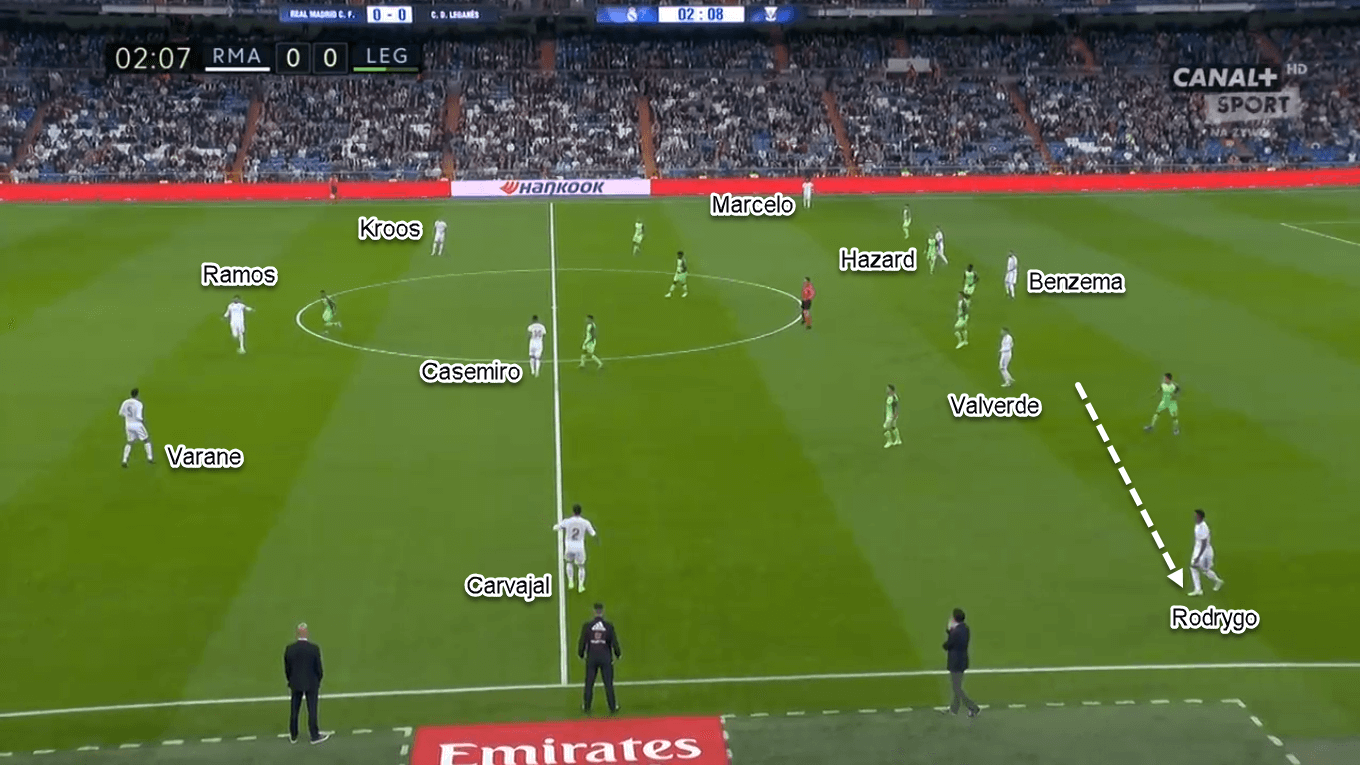
The Brazilian’s positioning on the flank also has another purpose.
That is allowing Madrid to have a player to occupy the far-side area for most of the time.
This allows him to stretch the defensive block and receive diagonal passes when Los Blancos need to switch the play.
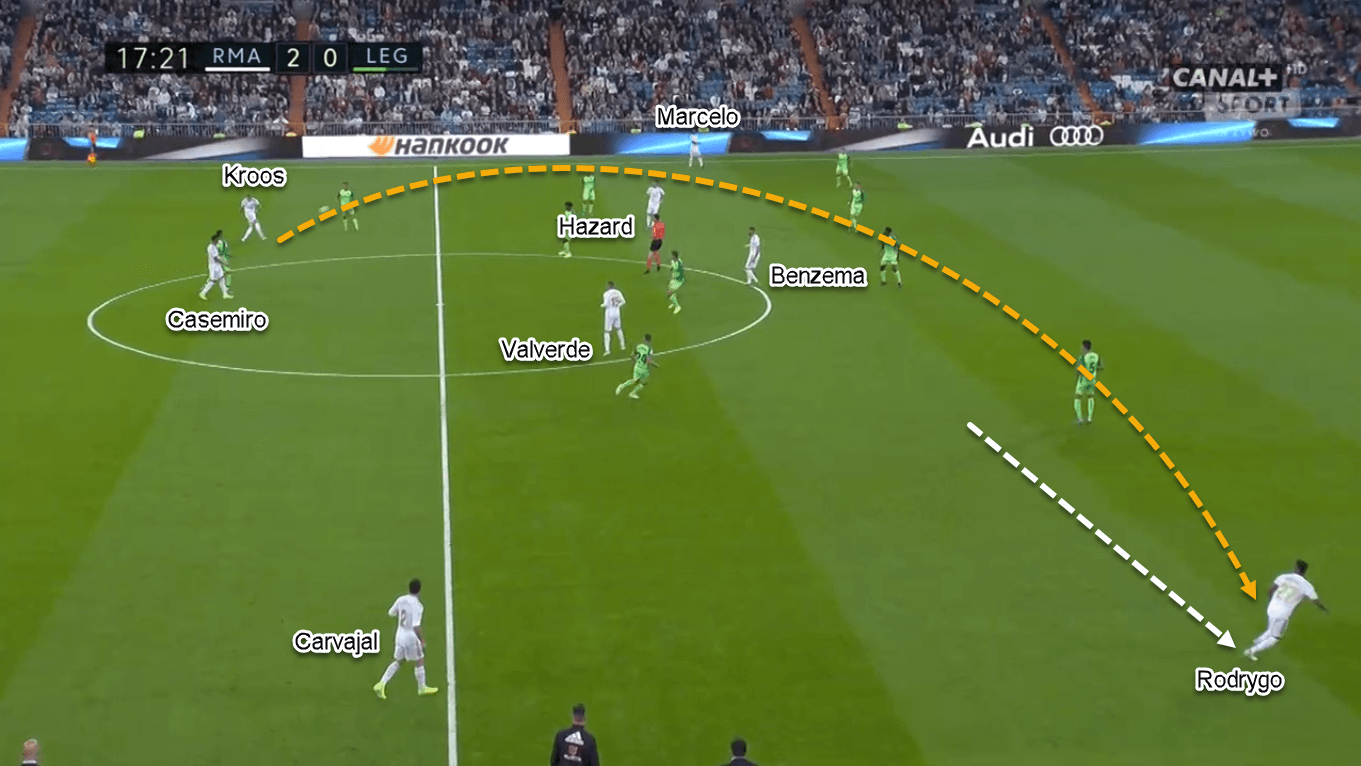
Madrid is known as a more positionally fluid team under Zidane.
The Frenchman gives a lot of freedom for his squad on the ball to make that happen.
Another important feature to support that is the supreme ability of his players that allow themselves to play in various areas of the field, including Rodrygo.
It means that the 19-year-old can also tuck inside and allow the full-back to provide the width, even receiving diagonal passes when needed.
He tucks inside most often when Madrid have pinned the opponents back.
By doing so, Rodrygo could easily go into the penalty box while the full-backs provide the crosses.
We will explain this in the latter part of the analysis.
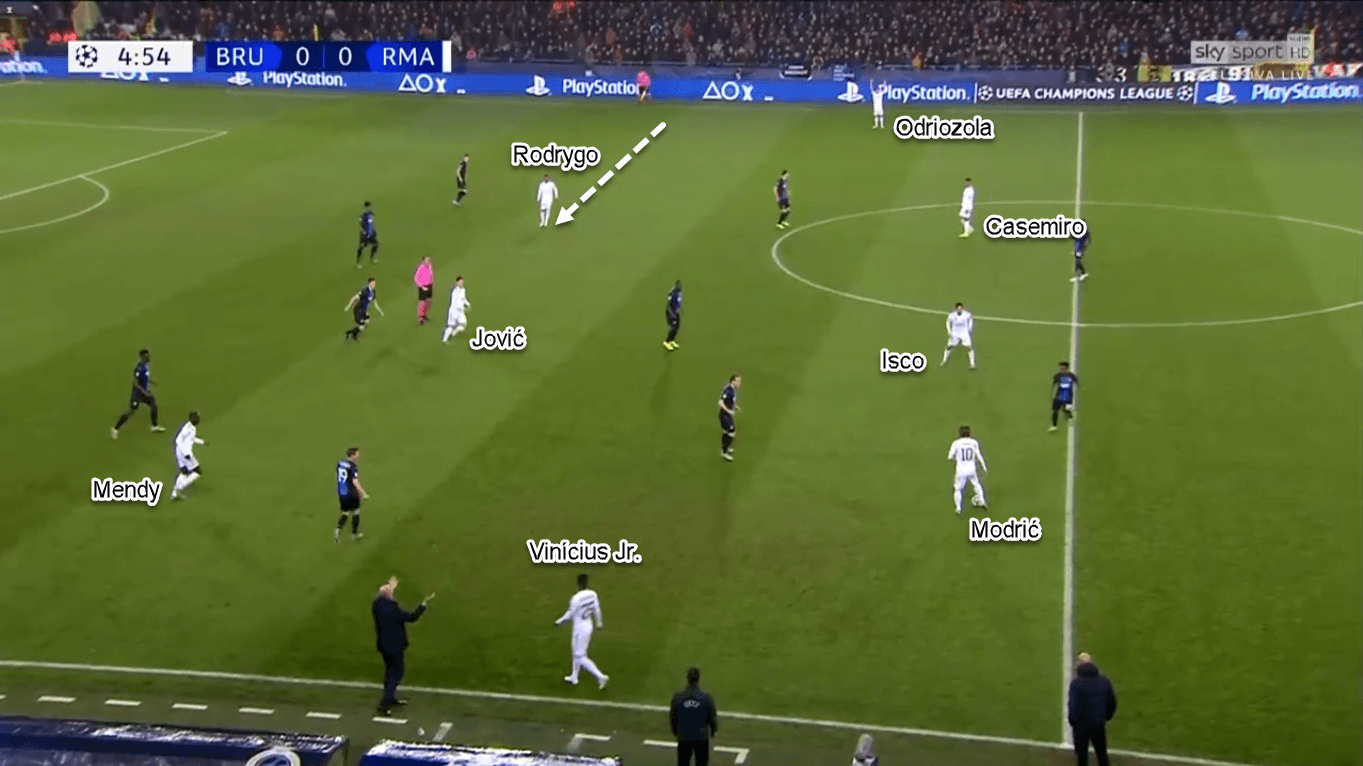
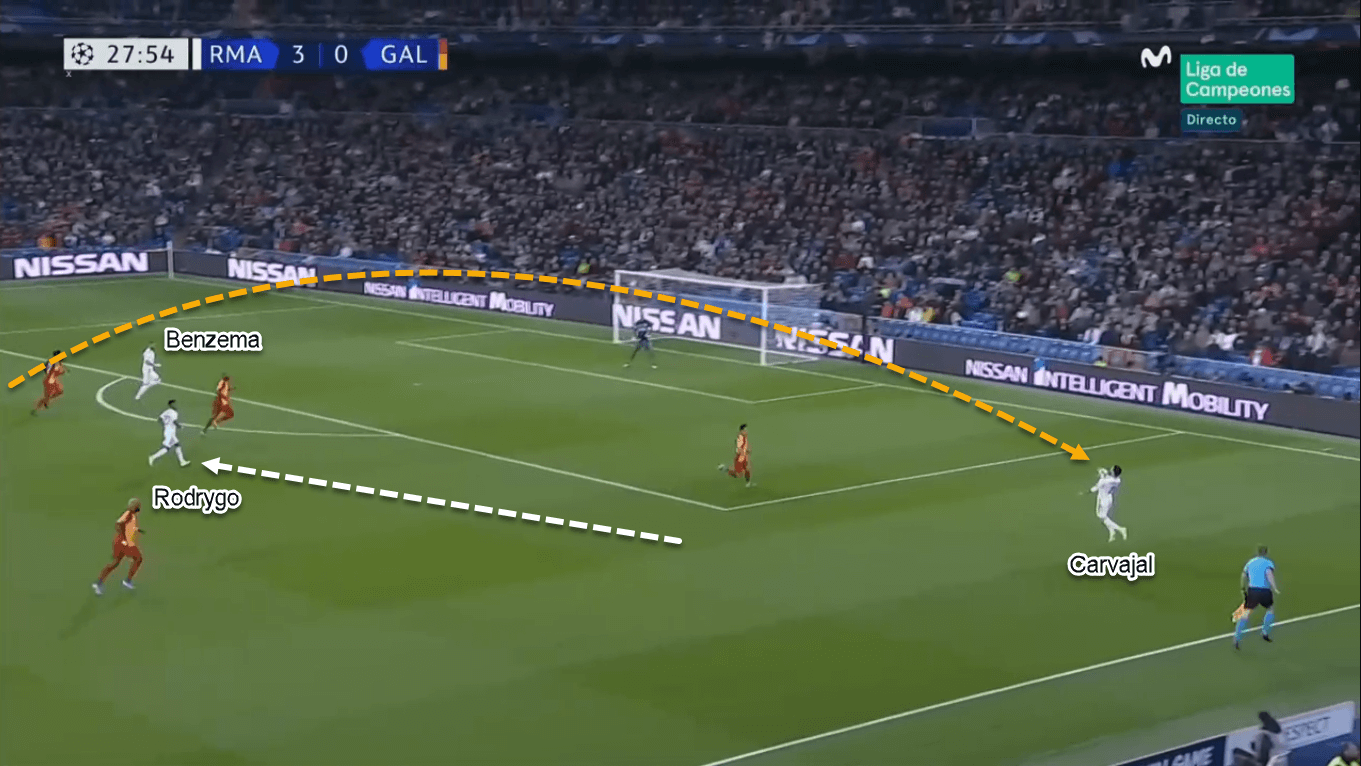
Likes to engage with others
Despite playing as an attacker, Rodrygo is not the type of player who passively stays up front most of the time.
Instead, he likes to come short and participate in Madrid’s build-up plays.
He can do that in various ways, as follows:
First, he can stay wide and drop just in front of the full-back.
If his marker doesn’t follow him, Rodrygo will have enough space and time to combine with his teammates.
If his marker steps up and closes the Brazilian down, it will almost likely open a gap in the defensive block.
The gap then can be attacked by one of the men in white, mostly the marauding central midfielder.
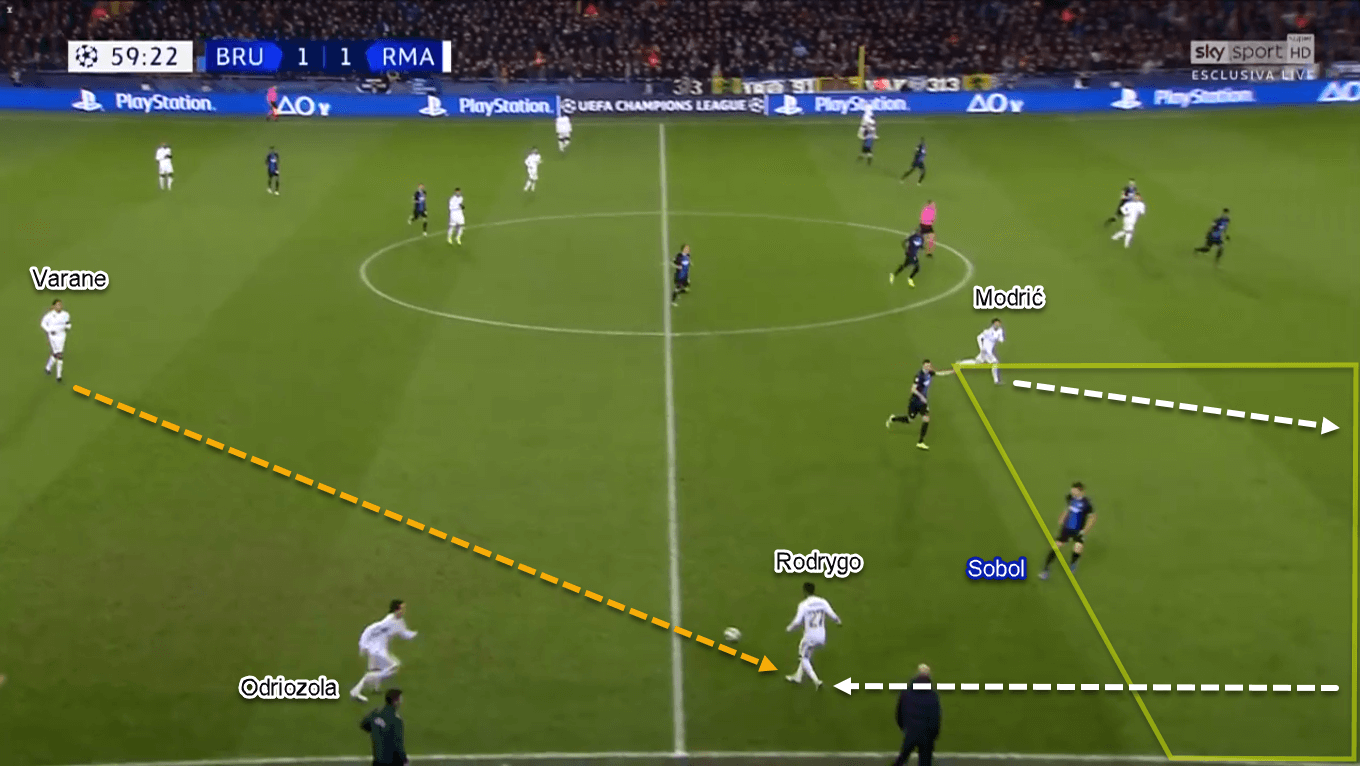
Secondly, he can move centrally and drop alongside the midfielders inside the half-space.
By doing that, he offers himself as a link-up option for the centre-forward or the midfield players.
Sometimes Rodrygo can also be found in between the lines to offer verticality in Madrid’s attacks.
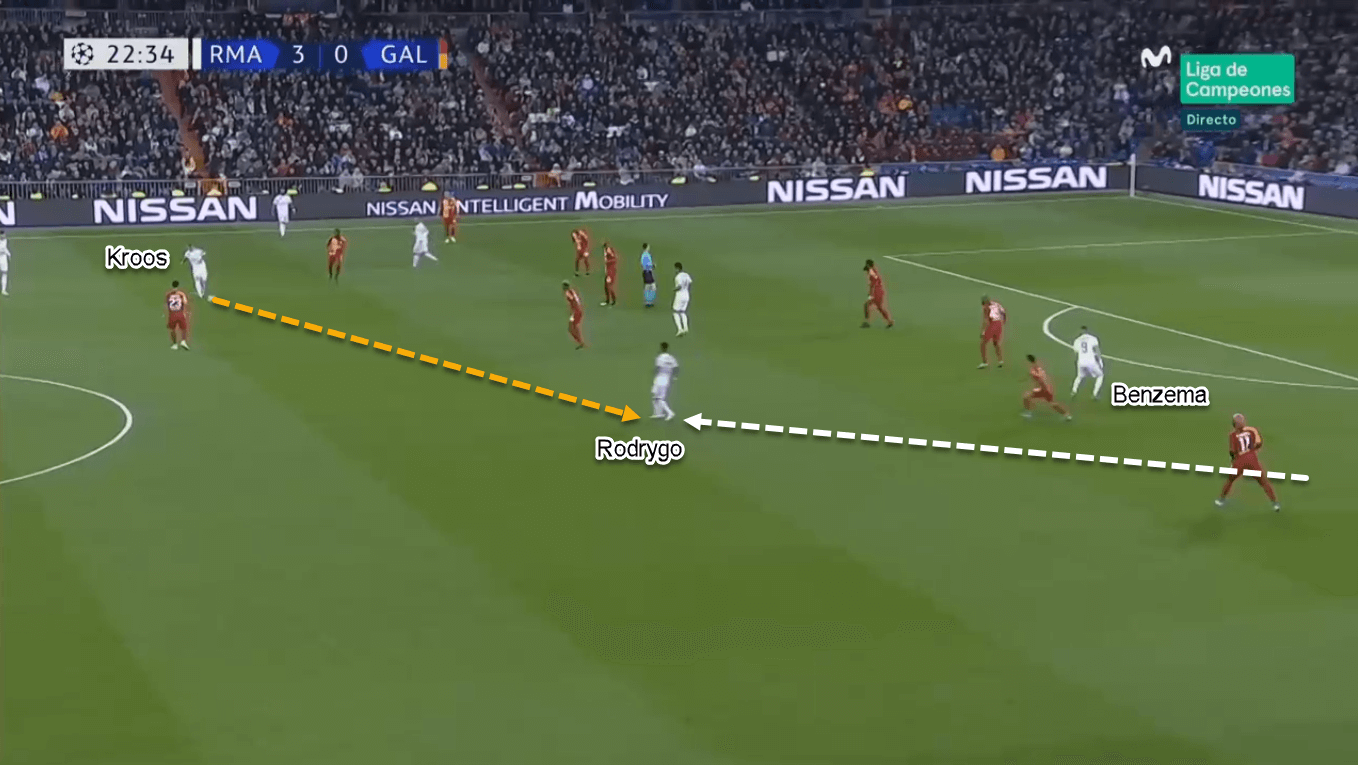
Lastly, he can even go to the opposite flank and flood the area.
There, he can combine with players like Hazard, Kroos, and/or Marcelo who have the great passing ability and brilliant composure in tight spaces.
It doesn’t stop there.
By coming to the opposite wide area, Rodrygo can help his team to make an overload before allowing a free player to continue the attack.
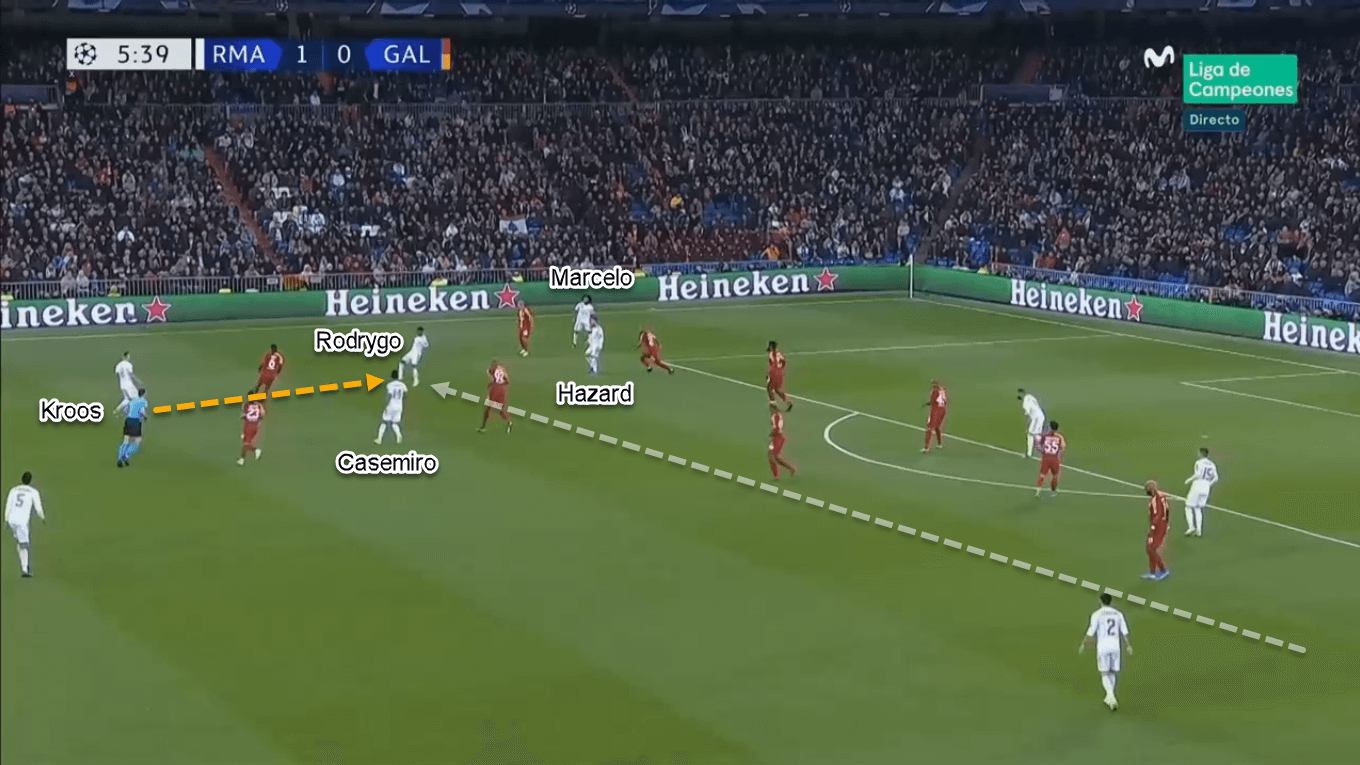
Serious threat inside the box (part one)
In the earlier part of the analysis, we have mentioned Rodrygo’s tendency to get into the 16-yard area.
This is important as Madrid is known as an actively-crossing team.
The stats show that Los Blancos averaged 16.9 successful crosses this season; the third-highest in La Liga.
Zidane usually instructs the full-backs to send crosses into the box, even though the wingers can also do that on some occasions.
Inside the box, the manager will put up at least three players as the crossing targets: the centre-forward, the winger(s), and one of the midfielders.
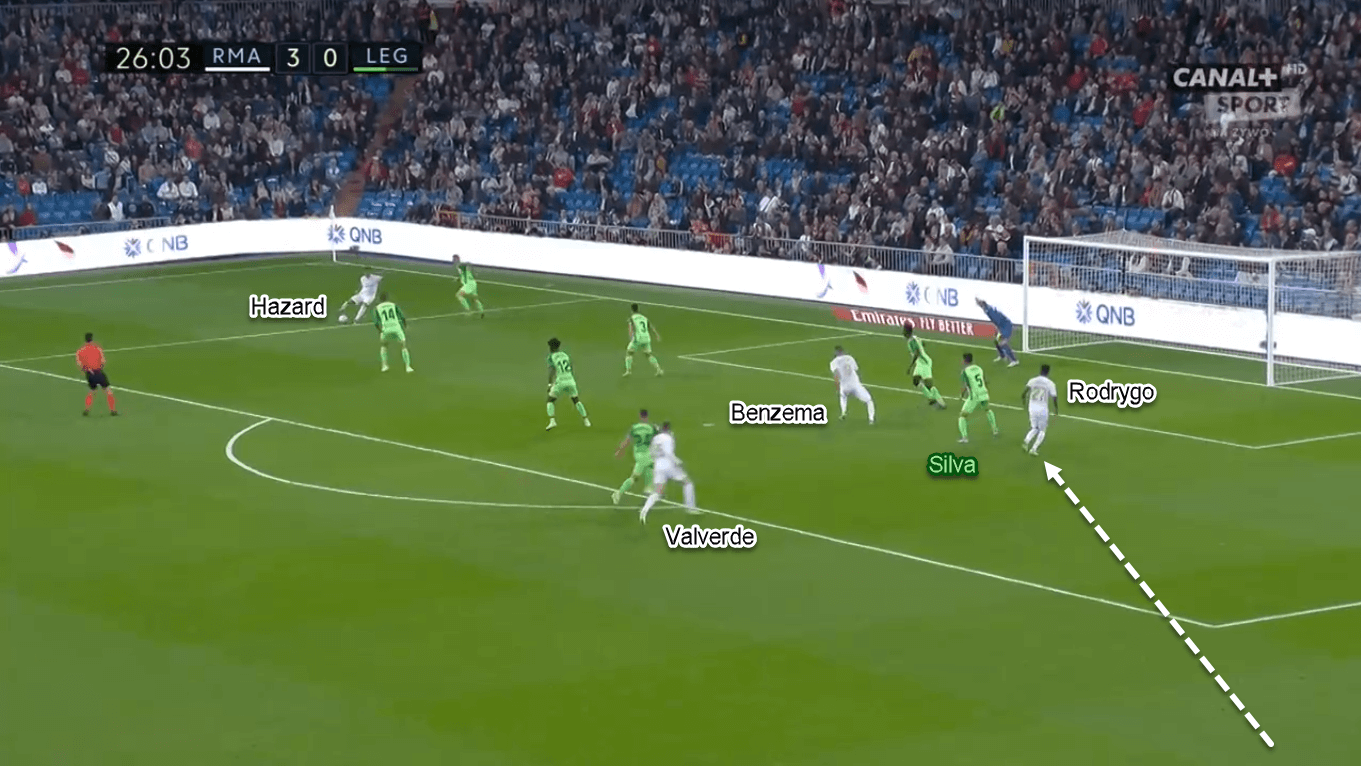
As a winger, Rodrygo will come into the box and offer himself at the far post.
In the process, the Brazilian will most likely stand behind the opponent’s full-back, thus removing him from the defender’s eyesight.
The objective behind this is to make himself harder to detect for the defender.
Serious threat inside the box (part two)
However, Rodrygo adds the threat by occasionally switching positions with the centre-forward.
It means that he can appear centrally while the target man goes into the far post.
When playing centrally, Rodrygo will put himself in between two defenders.
The objective is to make the defenders confused on who should be closing him down.
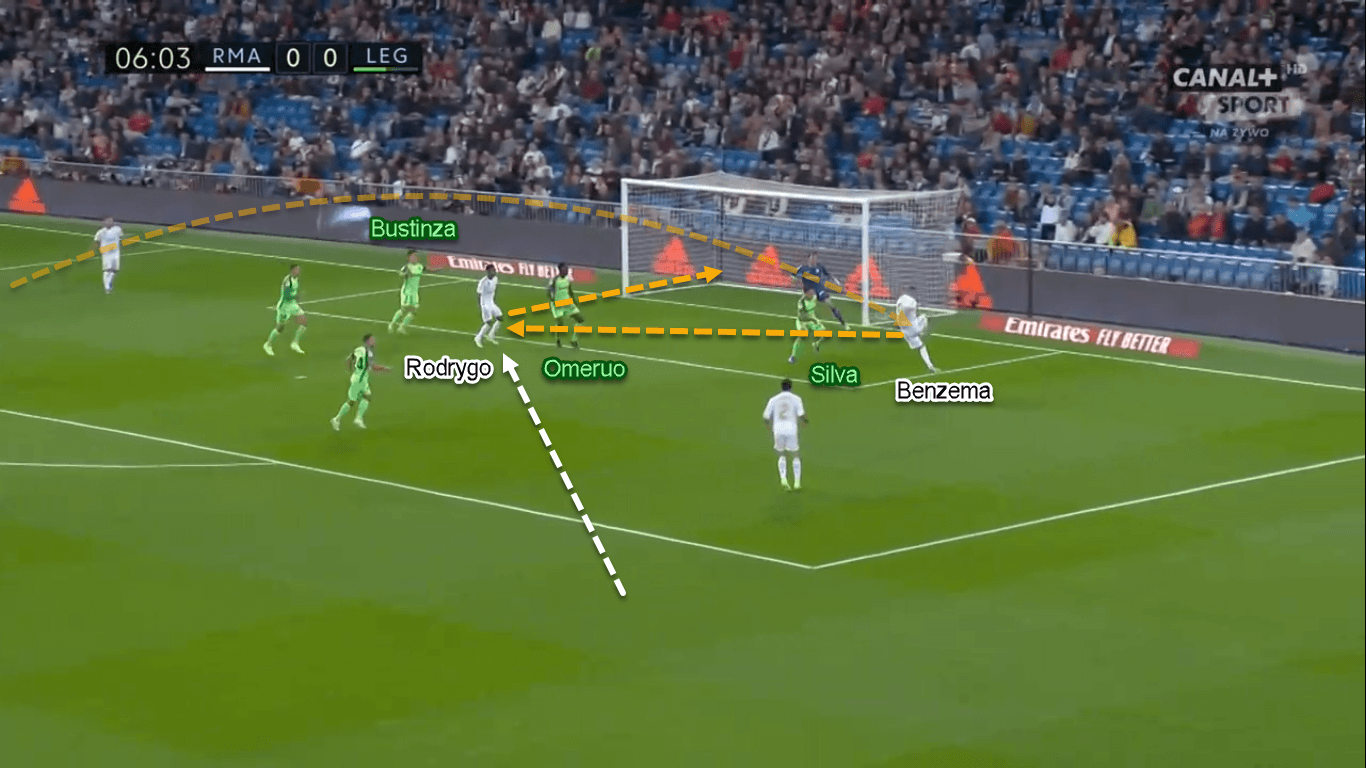
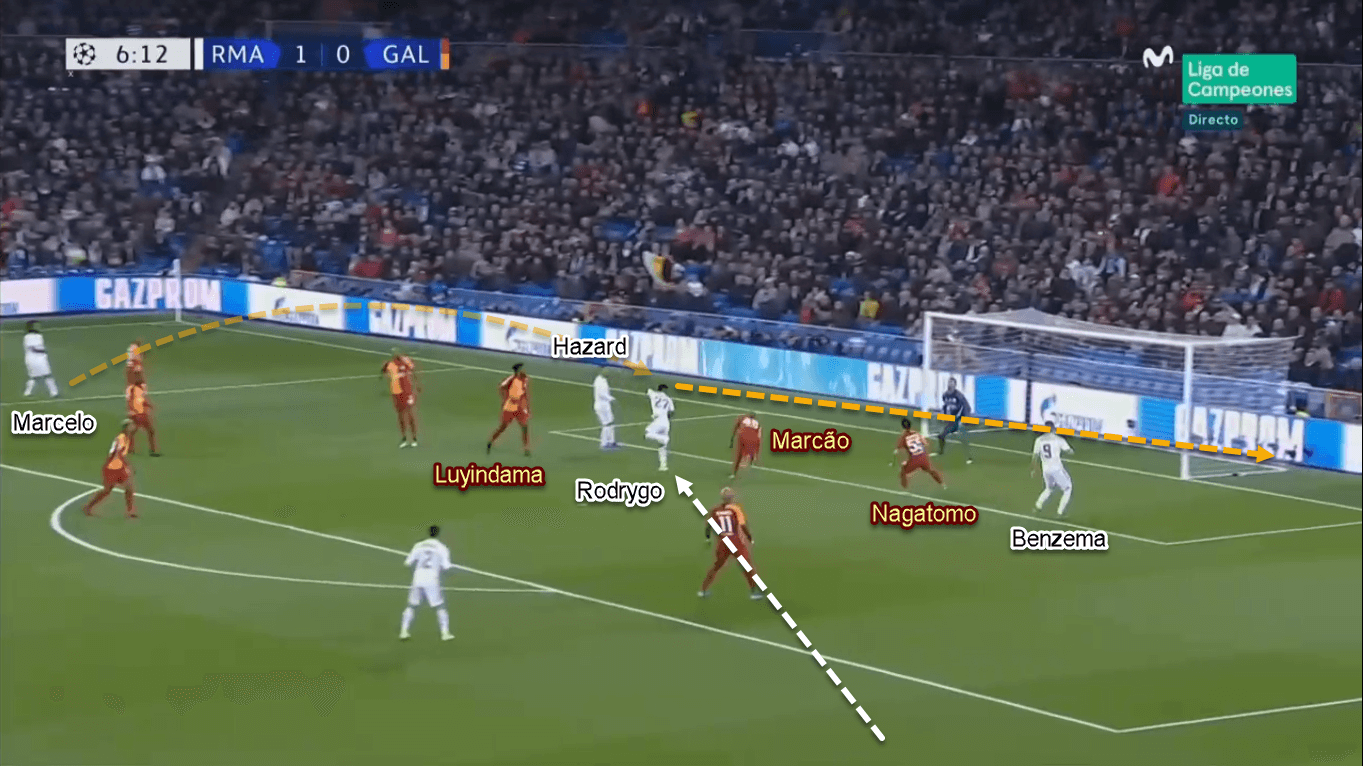
Another important feature that makes Rodrygo more threatening in the box is his composure and a great nose for goals.
This means that the teenager can use all parts of his body to ensure that the ball lands in the back of the net.
Either by a one-touch strike, a composed short dribble-and-shoot, or a rather awkward finish, all have been done by Rodrygo this season.
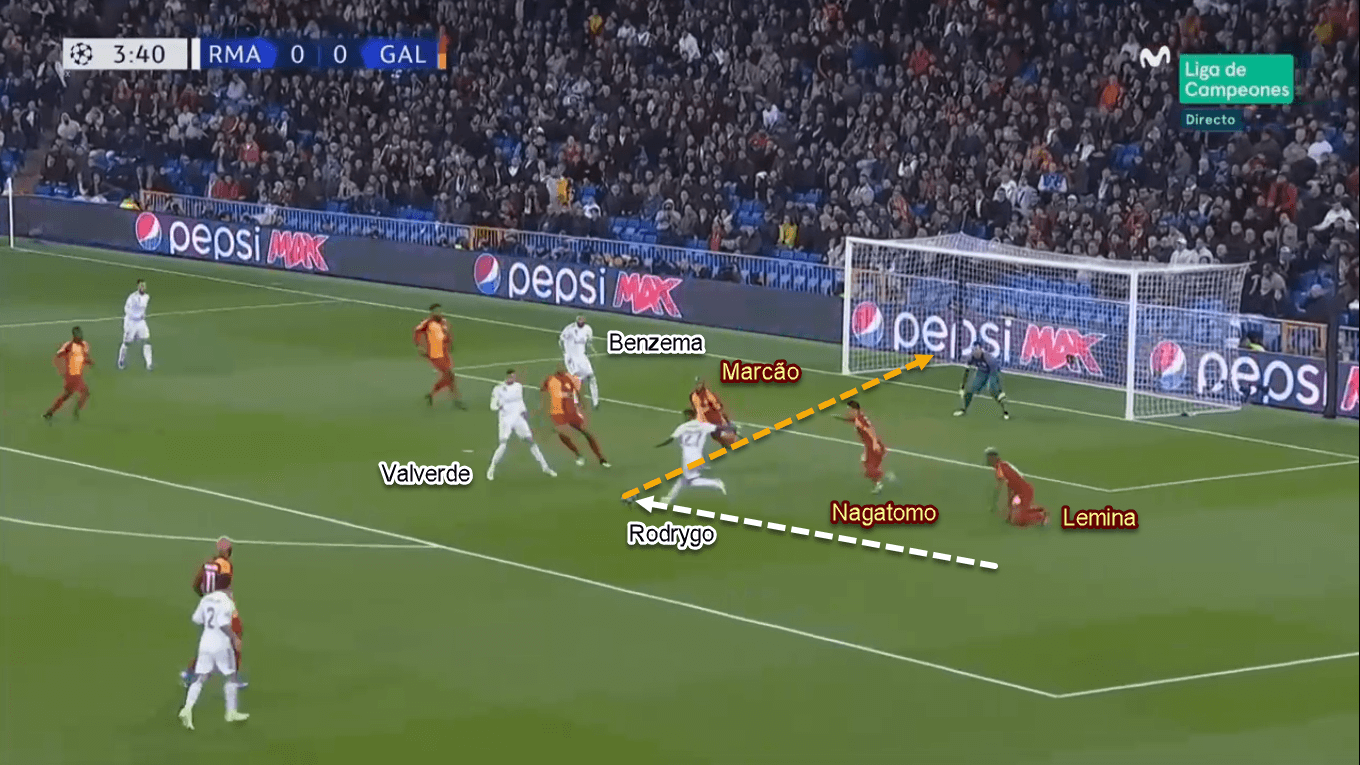
Speaking of that, let’s take a look at the statistics.
Of his seven goals across all competitions, three of them came from his weaker left foot.
He has also made one goal with a header, despite standing only at 174 centimetres.
Such a feat underlines Rodrygo’s unpredictable threat inside the box.
Rodrygo Defensive roles (part one)
When his team don’t have the ball, Zidane likes to use a rather aggressive man-oriented high-press.
This means that the defending system focuses on each opponent instead of the zone.
In that particular defensive system, Rodrygo still acts as a right-winger but will press various players regarding the opponents’ playing shape.
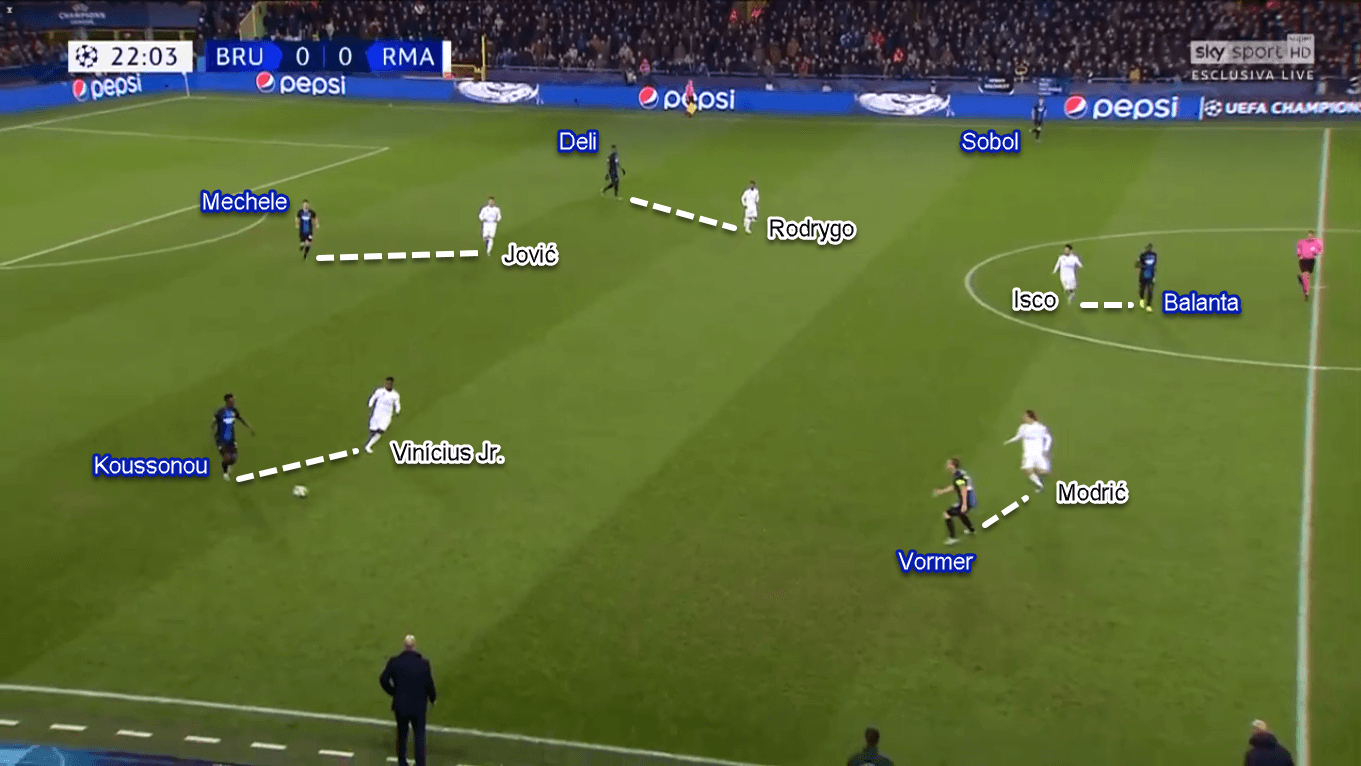
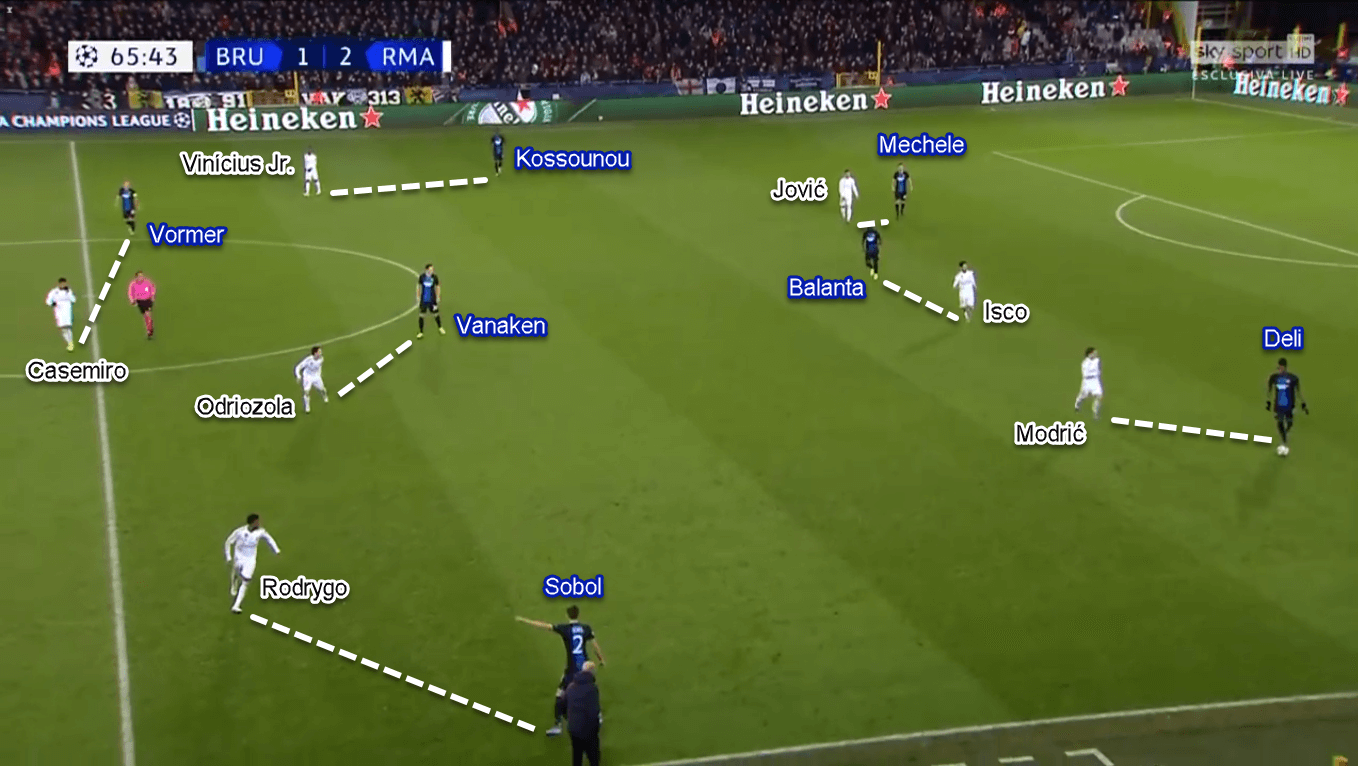
If the opponents use three defenders at the back, Rodrygo can either press the outside centre-back or his side wing-back.
But, if the opponents use a back-four, Rodrygo will almost likely be tasked to close down the full-back.
The objective is the same: to prevent the opponents from building their attacks shortly.
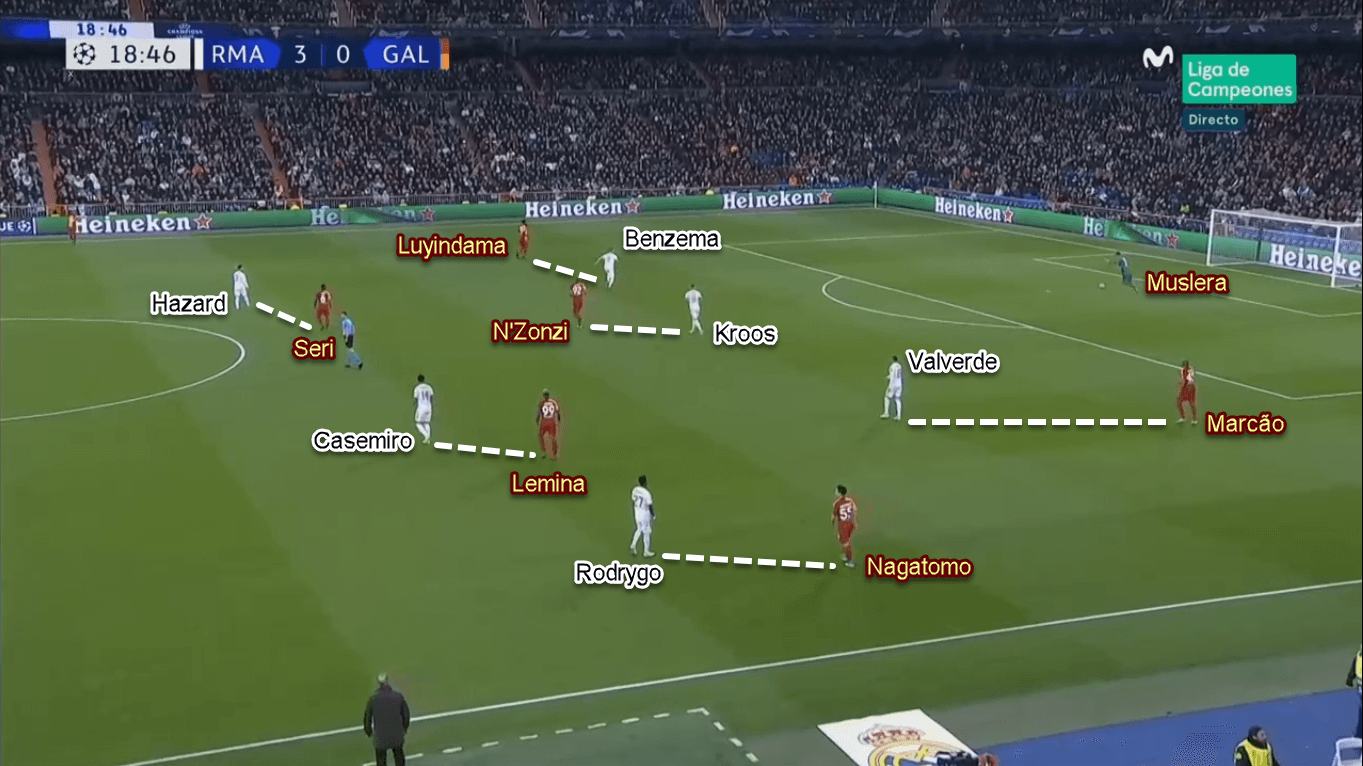
Rodrygo Defensive roles (part two)
Despite the man-oriented nature of their high press, Zidane deploys another system when defending deeper.
It means that Madrid will defend more zonally in a medium-block 4–1–4–1 when the opponents have more time on the ball.
In this shape, Rodrygo stays as the right-winger and will press aggressively when the ball comes to his side.
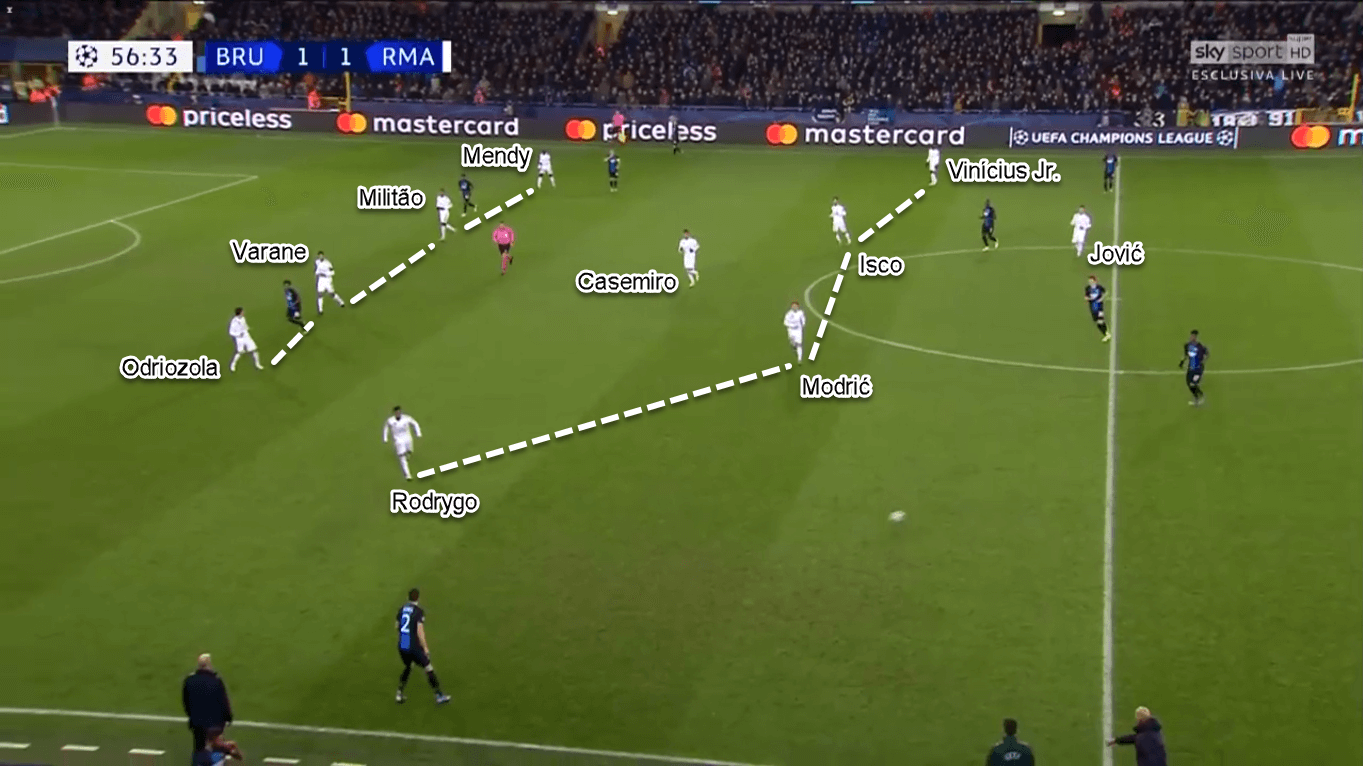
Being an unpredictable attacker doesn’t mean Rodrygo is defensively lazy.
The reality is the opposite: he has a solid defensive work rate that can be found mostly in transitions.
It means that Rodrygo will retreat and join the deeper players when the opponents launch a counter-attack.
Whether that started from his mistake or his teammate(s), the teenager can be found willingly helping to defend in transitions.
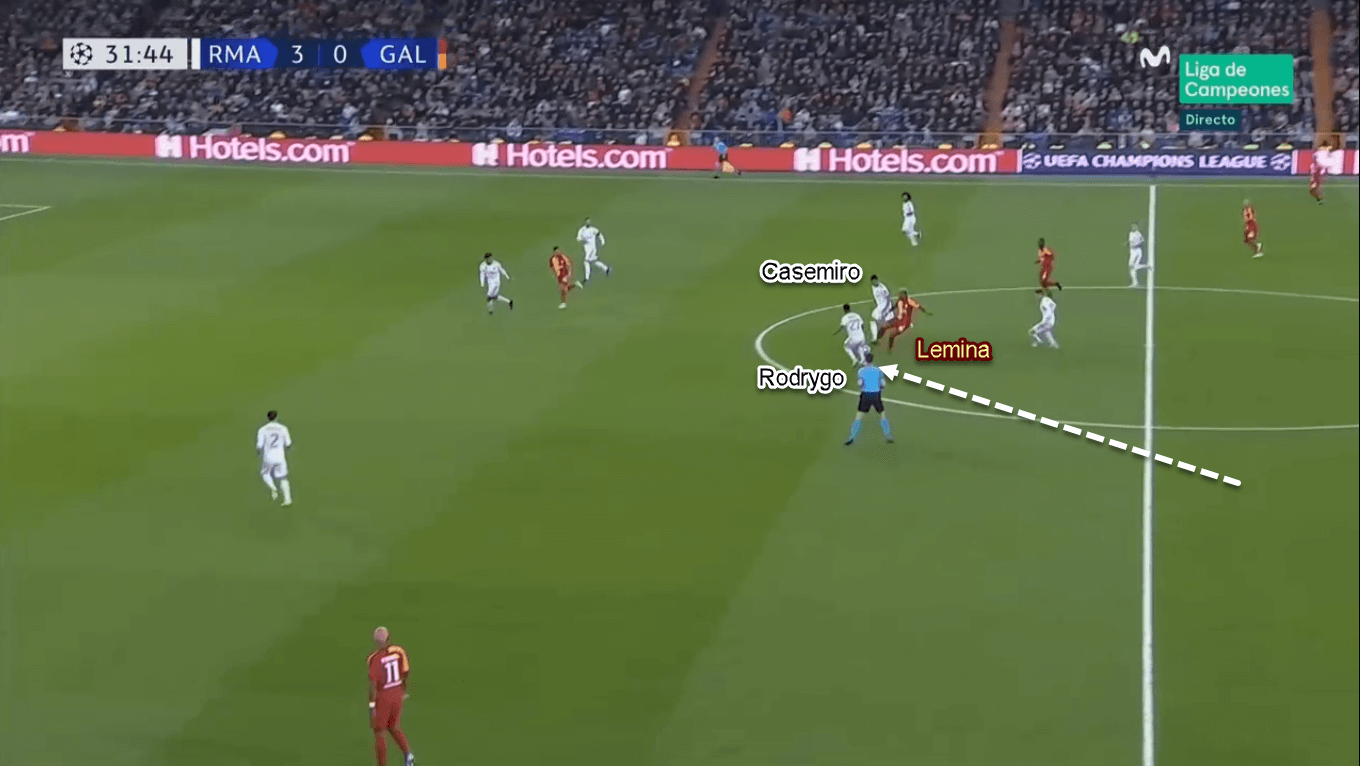
Rodrygo Potential issues
Rodrygo’s tendency to offer link-up plays is not always advantageous for Madrid.
Sometimes he would also miscalculate his dropping movement.
When he does that, he would pull more opponents with him; thus making him unavailable to access.
Furthermore, it could limit the playing space for him and his teammate(s) instead of opening the opponents’ defensive block.
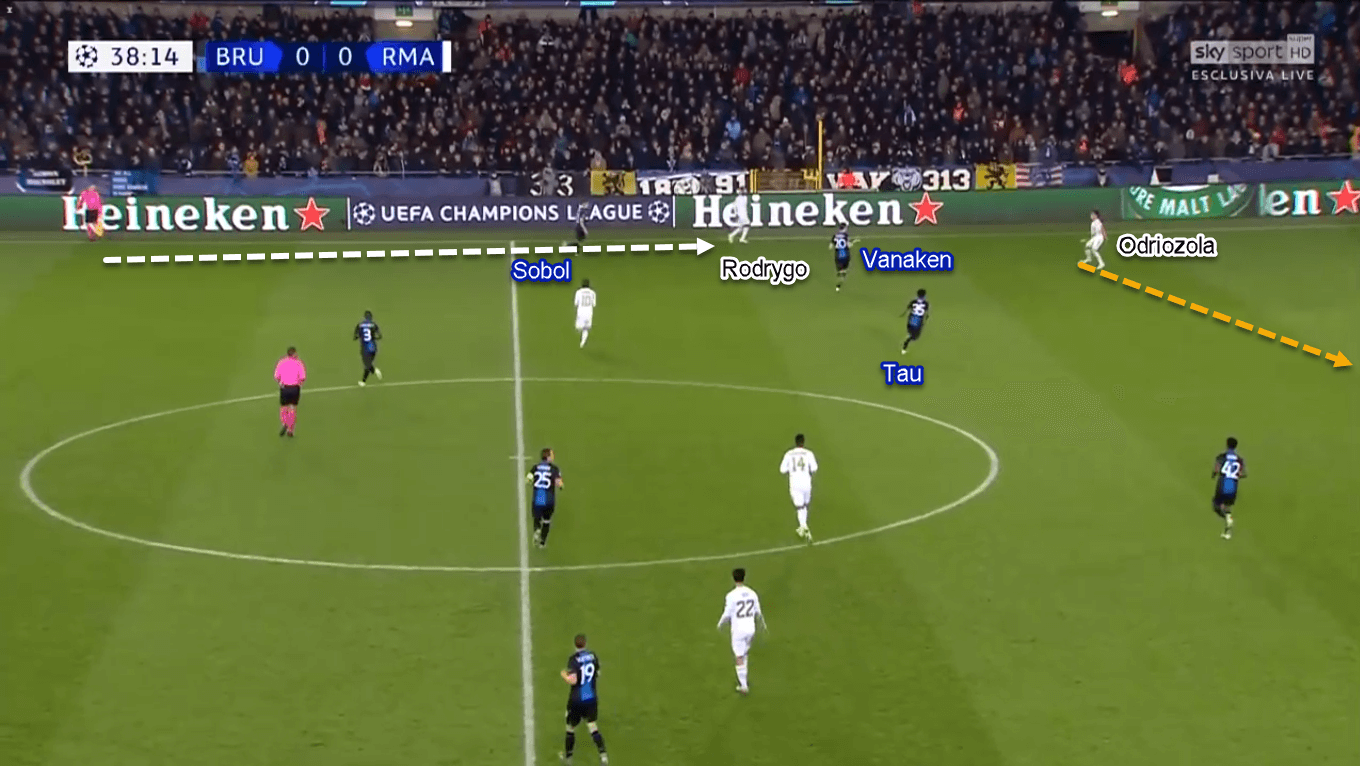
Another issue in his game is his lack of crossing quality.
Indeed, this is not the most important task for him as an attacker, but it seems that he’s quite poor in this aspect.
If we look at the stats, he only averages 1.1 (31.24%) accurate crosses per 90 minutes in La Liga.
Even worse, Rodrygo currently is only averaging 0.7 (25.92%) successful crosses in every 90 minutes he has played in the Champions League.
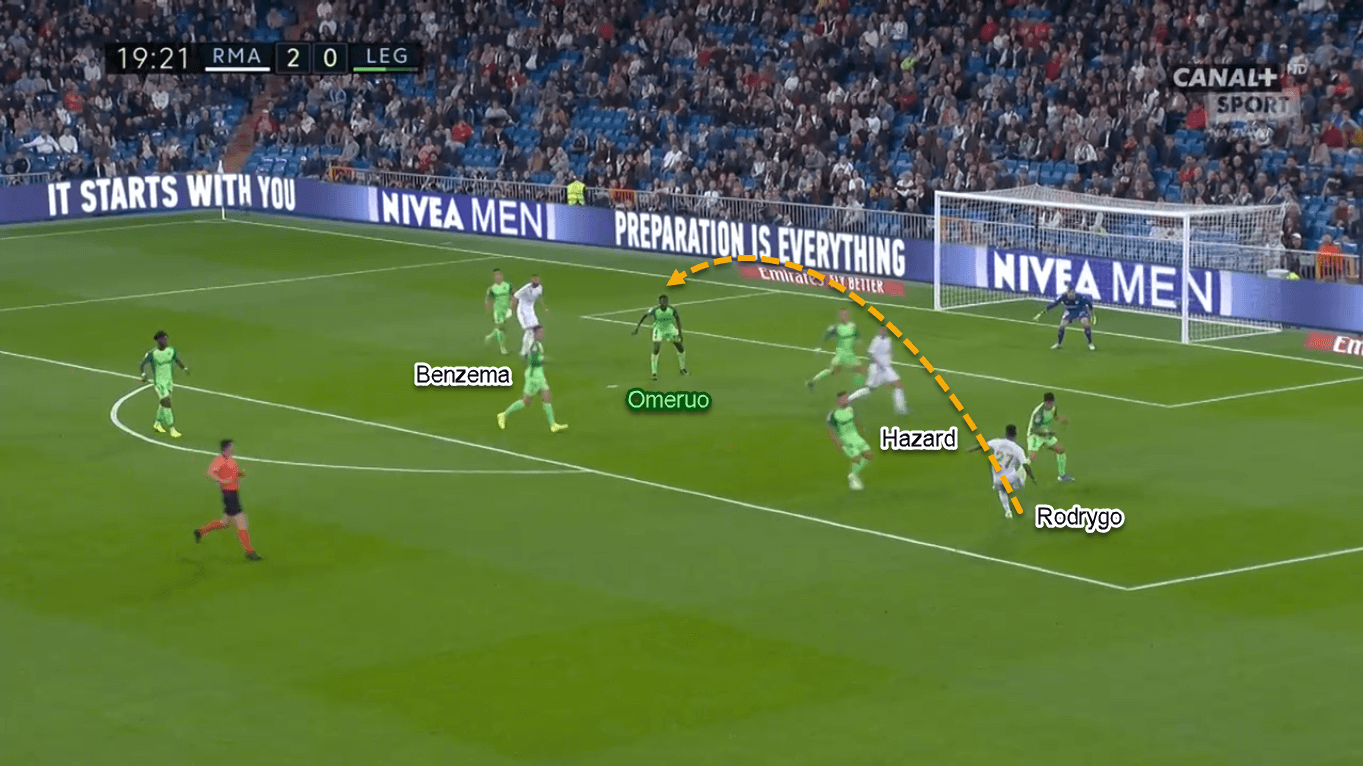
The next issue in Rodrygo’s game is his reluctance to dribble.
On some occasions, he seems not interested to engage in the one-versus-one duel despite huge space around him and his marker.
At other times he would opt to make a pass rather than driving into space.
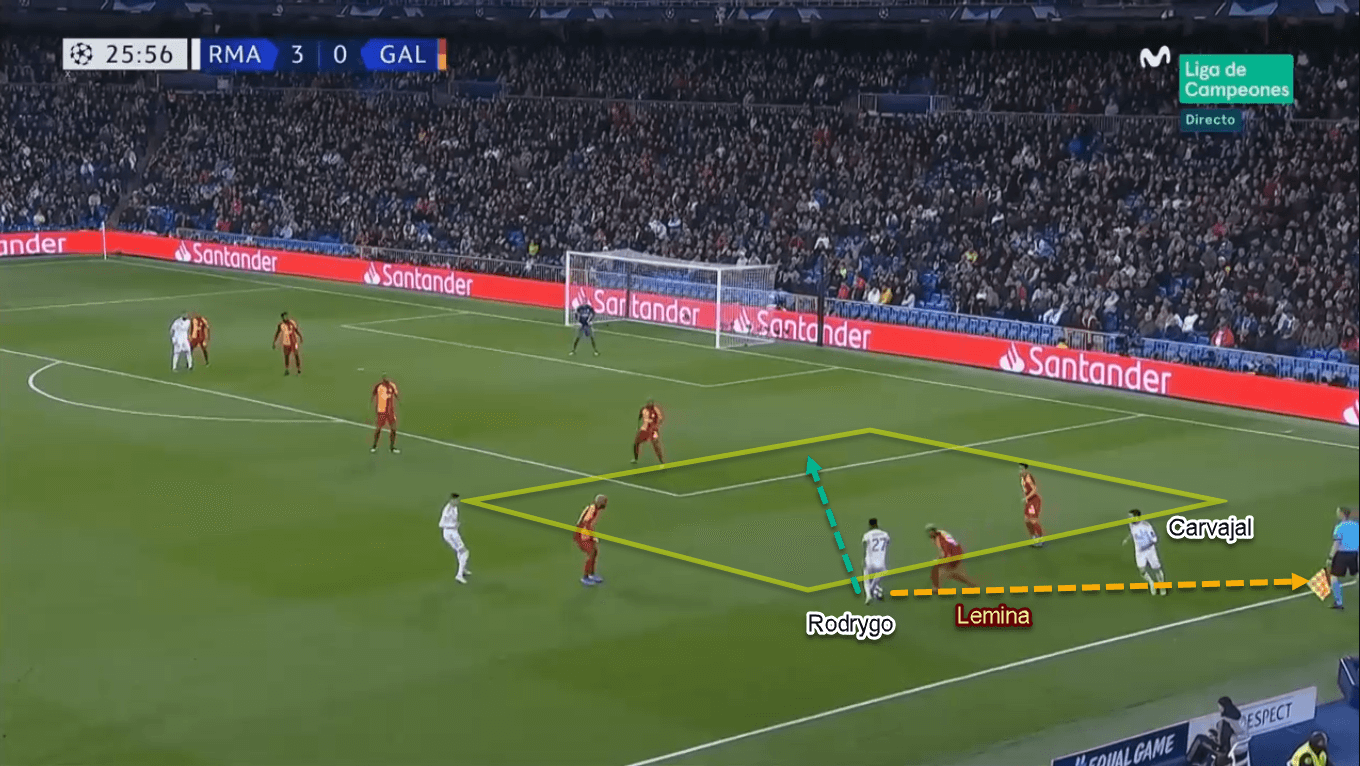
Is he bad at dribbling? We don’t think so.
Rodrygo has good close control and sharp turns to make him thrive in one-versus-one duels.
Unfortunately, he doesn’t use them often.
Such potentials really need to be tapped and polished to make him a more dangerous forward in the future.
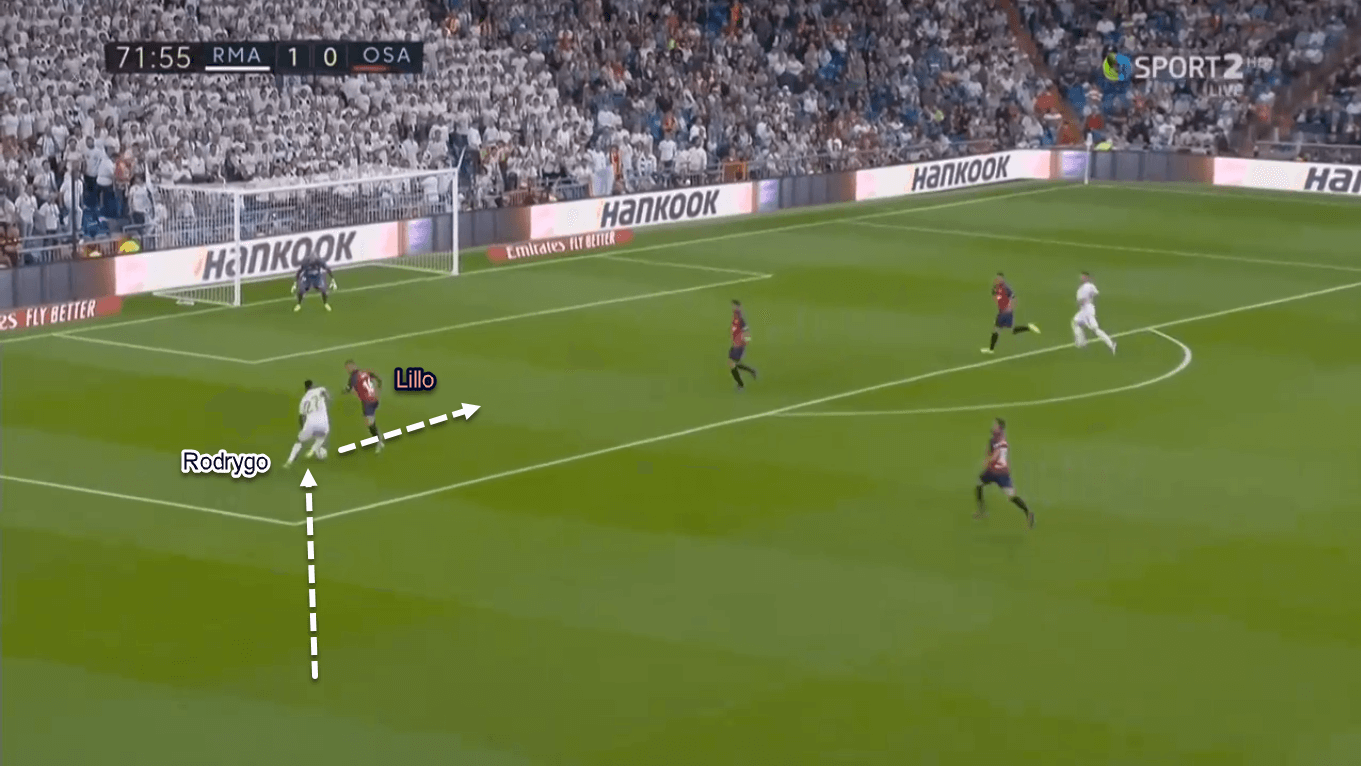
Conclusion
Rodrygo is a very exciting attacker to watch.
His great nose for goals and supreme composure make him look like a seasoned veteran rather than an inexperienced youngster inside the box.
Besides that, he’s also a good team player.
It’s shown by his tendency to participate in short combinations as well as helping his teammates in defending transitions.
Despite all of that, Rodrygo still has more to offer.
The most important aspect is his dribbling talent, which somehow remains untapped potential for now.
Polishing this particular ability is a must for the teenager to make him more unpredictable in the final third.
If he does that, the sky is the limit for this superstar in the making.

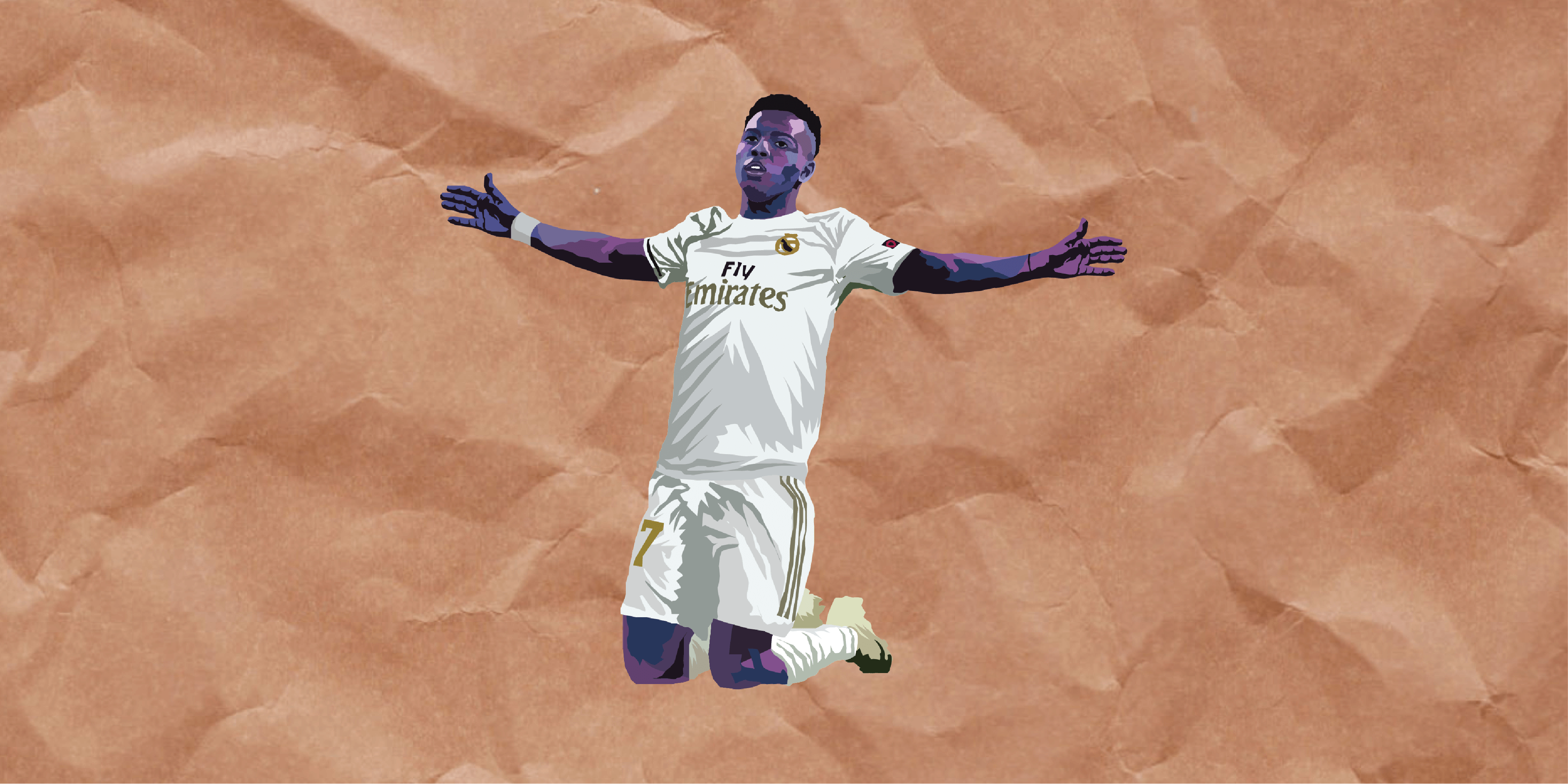



Comments